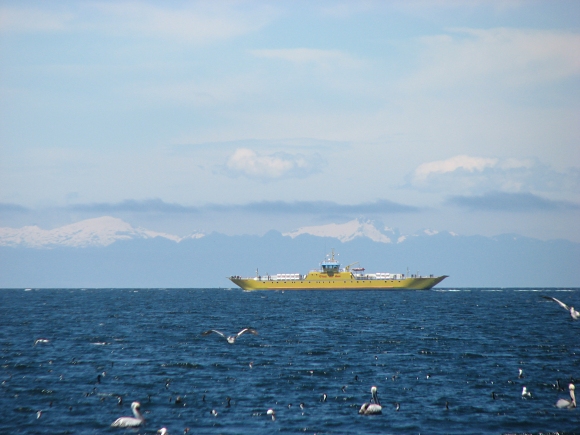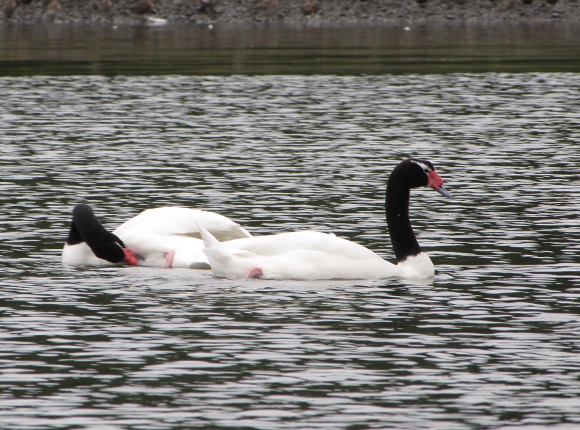
Isla Grande de Chiloé is Chile's largest island. It's about 118 miles long and averages about 35-40 miles wide. A history of local resistance and a rich mythology populated by trolls, sea monsters, and eerie ghost ships differentiates Chilote culture from mainland Chile and uniquely sets it apart from the rest of the country. Renowned for its seafood, woolen handicrafts and the warmth of its people, Chiloé is still a largely unknown destination and as such, even in “high season” (Nov-March), the island and the archipelago are relatively uncrowded.

Divided by the gentle slopes of the Coastal Range, Chiloé's eastern and western coasts are dynamically different. To the west is wilderness comprised of never-ending beaches, dunes and temperate rain forests... much of it within the confines of and protected by Parque Nacional Chiloé. To the east are the scattered islands of the Chiloé archipelago. Beautiful, remote and sheltered from Pacific storms, these little islands are intensely cultivated and home to a traditional culture of farmers, fishermen and craftsmen.

We traveled aboard Nine of Cups and motor-sailed between islands, but regular passenger and car/bus ferry service is available from Puerto Montt on the mainland across the Canal de Chacao to Ancud, a port on Chiloé's north end. The ferry ride itself, though short, can be very exciting with dolphins swimming along side the ferry, a tremendous amount of birdlife and the snow-topped Andes in the distance.
From Ancud, you can take a bus to Castro, the capital “city” of Chiloé. In fact, Castro is the island's only city and though small, there's a well-stocked, modern supermarket (Beckna), basic hardware, lots of visitor services including backpacker lodges, hotels, restaurants and tour options plus laundry, internet, and an outstanding “feria” (fresh market) The crafts market on the waterfront offers the usual souvenir-type trinkets, but also lots of locally knitted woolen wear including knitted dolls that are unique to the island. Smaller ferries are available from Castro to most of the arger islands in the archipelago.
There is so much to see and appreciate in this area, we could have spent the entire season and still not seen it all. For sailors, “Patagonia and Tierra Del Fuego Nautical Guide” by Rolfo and Ardrizzi (aka “the Italian guide”) is the best reference available. Navtech electronic charts were excellent and detailed for the area, but the tide tables were way off. We relied heavily on Lonely Planet Chile for all of our land travel.
for all of our land travel.
Here's just a sampling of what we saw...

Estéro Pindo/Isla Quehui
The little village of Los Angeles has a traditional, wooden church which you can visit; a small café which offers beverages and meals when given advance notice; a small mini-mart offers basics, some fresh veggies and fresh bread. We hiked around the area (all green, rolling hills and dirt roads/paths) and picked wild blackberries which are in abundance throughout the islands here in late February. A short ferry ride across the bay offers another hiking opportunity and another church to photograph plus great vistas from the top of the hill.

Estéro Pailad / Chiloé
For us, this was the essence of remote Chiloé. We anchored just in front of a tiny village with a picturesque wooden church, sheep, cattle and horses grazing on its front lawn. The birdlife was astounding. Several pairs of black necked swans swam gracefully past us. Magellanic penguins , Chilean widgeons, speckled teals, steamer ducks, whimbrels, oystercatchers, southern lapwings and an entire beach covered with Hudsonian godwits were among the many identified. Yes, we did need our bird guide to identify most of these birds. Birds of Patagonia, Tierra del Fuego and Antarctic Peninsula by Couve & Vidal was an excellent reference book. Sea lions and dolphins were in this estuary as well. It was crowded in all the right ways!
Marina Quinched / Chiloé
Located in Quinched on the Canal Lemuy, mainland Chiloé, William and Vanessa Bannister operate a small marina and lodge that could not have been more perfect. The marina offers moorings and dock space and the lodge was comfortable and clean. Free wifi, free washer with a clothesline for drying, clean, hot showers, a playground and lots of room to run for kids. A cute little cafe with morning coffee and freshly baked pastries and a beautiful club house with a kitchenette and an inside BBQ for guest use were outstanding additions. William offered free rides into Castro and Puerto Chonchi almost daily.
Things to see and do if you go...

Palafitos - Traditional houses on stilts which accommodate the huge tidal swings here

Churches - These unique brightly colored wooden churches are seen in every small Chilote town.
Take a close-up look … inside and out.

Unique, rich birdlife including native black-necked swans and
Magellanic penguins and hundreds of other species

The “feria” in Castro (fresh market) is outstanding.
Look for the colored, oddly shaped potatoes and sample some locally smoked salmon or fresh seafood.

Check out the woolen crafts especially the knitted dolls

Sample a “curanto”, a combination of seafood, veggies and meats,
cooked in an underground pit...outstanding!






 for all of our land travel.
for all of our land travel.






